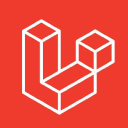I Sell Digital Greeting Cards And Make $35K Per Month
Hello! Who are you and what business did you start?
Hiya! My name is Val, I’m 30 years old and I live in Edinburgh, Scotland.
For the past 2 years, I’ve been running Thankbox - an online group card and gift collection service. My main customers are teams within businesses that want to celebrate someone’s occasion. A colleague’s birthday, retirement, or farewell are common use cases. It’s also often used by remote groups of friends and even families - basically any occasion that you’d use a regular old paper card you can use Thankbox for. You can even collect cash that the recipient can claim as a gift card. It’s got really simple pricing - $5.99 for a standard Thankbox and $9.99 for a premium one.

Since its launch, Thankbox has been used to send over 40,000 cards and has issued over $2 million worth of gift cards. On a typical month, it now pulls around $25k in revenue.

Download the report and join our email newsletter packed with business ideas and money-making opportunities, backed by real-life case studies.

Download the report and join our email newsletter packed with business ideas and money-making opportunities, backed by real-life case studies.

Download the report and join our email newsletter packed with business ideas and money-making opportunities, backed by real-life case studies.

Download the report and join our email newsletter packed with business ideas and money-making opportunities, backed by real-life case studies.

Download the report and join our email newsletter packed with business ideas and money-making opportunities, backed by real-life case studies.

Download the report and join our email newsletter packed with business ideas and money-making opportunities, backed by real-life case studies.

Download the report and join our email newsletter packed with business ideas and money-making opportunities, backed by real-life case studies.

Download the report and join our email newsletter packed with business ideas and money-making opportunities, backed by real-life case studies.

















